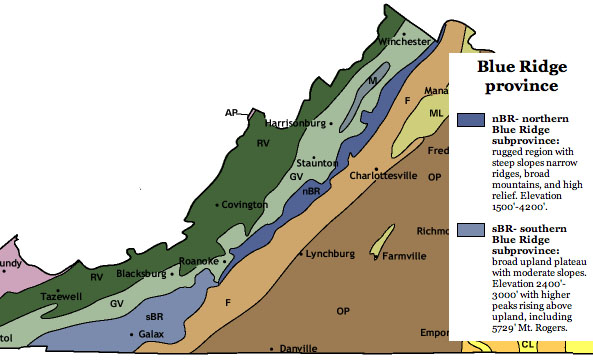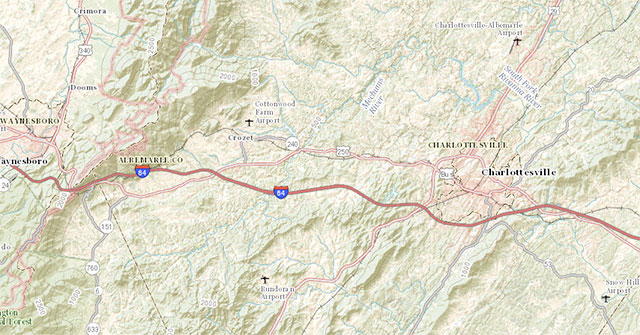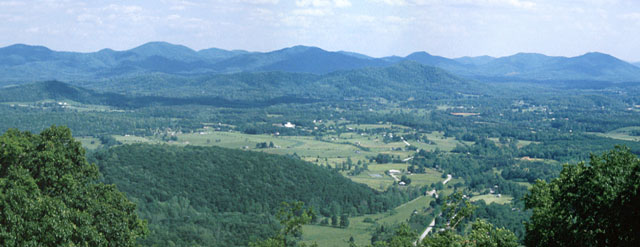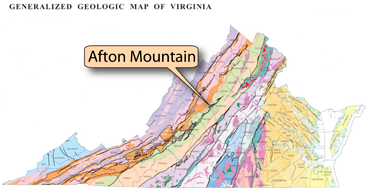
Blue Ridge Physiography: Extent and Boundaries
• The Blue Ridge lies between the Piedmont on the east and the Valley and Ridge to the west. It has the highest mountains in the state.
(Image from College of William & Mary
geology website, courtesy of C.M. Bailey)

Physiographic map of the Piedmont and Blue Ridge in the Charlottesville area. Charlottesville is in the Piedmont physiographically, but is surrounded by Blue Ridge-type rocks, which form hills that rise above the Piedmont surface.
(Image from The National Map, U.S. Geological Survey)

 Above: Photograph of the western Piedmont from Afton Mountain west of Charlottesville. Note the typical low-relief Piedmont surface with high peaks that resemble the rest of the Blue Ridge. (Photograph by Parvinder Sethi)
Above: Photograph of the western Piedmont from Afton Mountain west of Charlottesville. Note the typical low-relief Piedmont surface with high peaks that resemble the rest of the Blue Ridge. (Photograph by Parvinder Sethi)